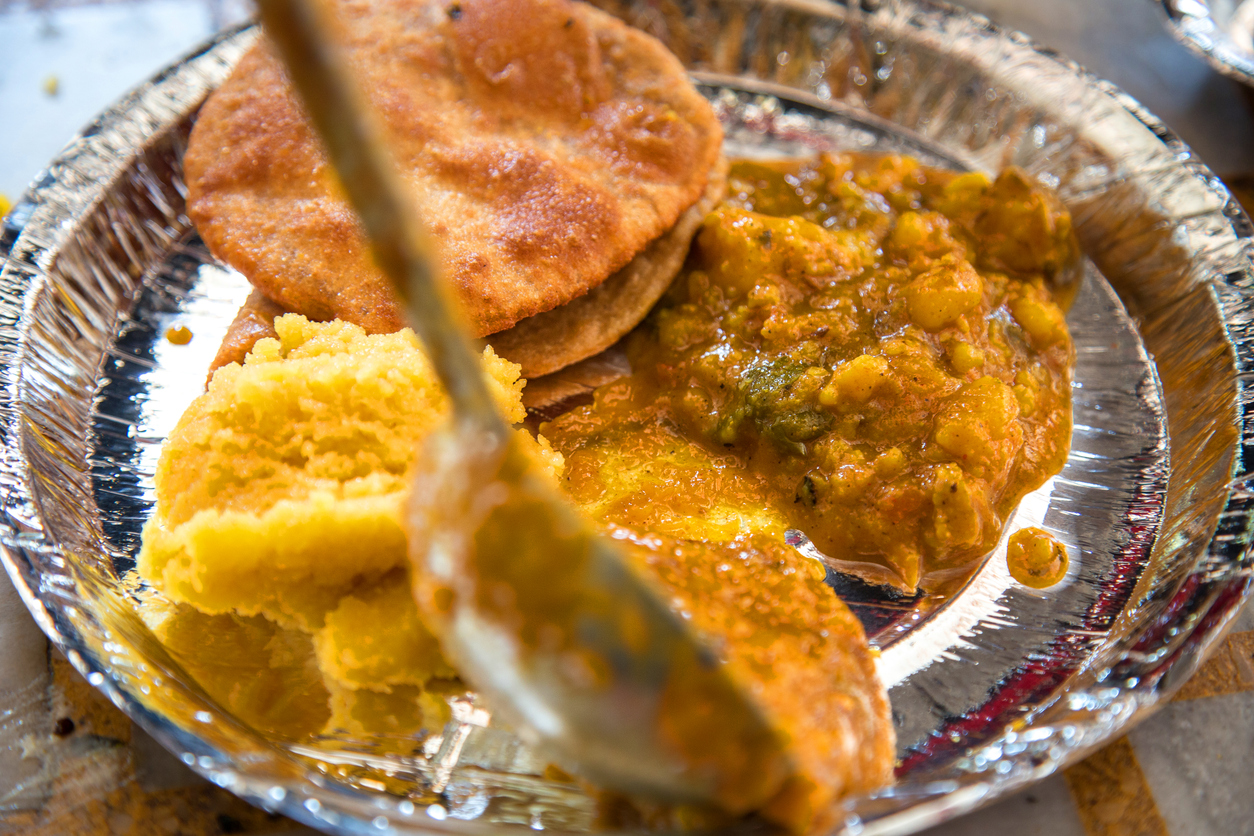Time Period: November 2020 – December 2021
Location: Delhi, India
Main Actors: Delhi Sikh Gurdwara Management Committee & other Sikh organizations
Tactics
– Protest camps, nonviolent occupation
– Declarations by organizations and institutions
– Material support
In September 2020, the Indian parliament, led by Hindu nationalist Prime Minister Narendra Modi and his Bharatiya Janata Party (BJP) passed three Farm Bills significantly cutting back government involvement in agriculture and removing protections for farmers. In response, farmers across India launched a protest movement to demand the bills’ repeal. For more detail on this movement as a whole, see our caselet on this movement here.
The peak of this movement involved a mass nonviolent blockade of the four main highways going into New Delhi, India’s capital, by hundreds of thousands of farmers. The farmers ultimately remained in the protest camps for over a year, until the government finally caved to the movement’s demands and repealed the Farm Bills in December 2021. Throughout this period, the protest camps consistently held tens of thousands of protesters who organized rallies and music performances, set up educational centers, and created their own media outlets.
The endurance of the Delhi protest camps hinged on the consistent provision of meals, medical supplies, clothes, and other basic services to its inhabitants. While the farmers’ movement was characterized by high levels of religious and ethnic diversity, much of the material support for the camps came from the Sikh community. Most of the farmers came from the region of Punjab, known as India’s breadbasket. Punjab is also the homeland of the Sikh religion, with about 58% of its residents identifying as Sikh. In Sikhism, all places of worship, called gurdwaras, have a langar hall, a community kitchen that serves free food to all people, regardless of religion, caste, gender, or ethnicity. Gurdwaras also frequently provide medical and educational services. From the beginning of the protest movement, Sikh organizations, leaders, and participants established langars and provided various resources and services to the farmers.
Before the arrival of the farmers, the Delhi Sikh Gurdwara Management Committee (DSGMC), which oversees all gurdwaras in the capital, announced that they would provide whatever material support was needed for the farmers’ campaign. Upon the establishment of the camps, the DSGMC set up langars that provided food several times a day to the farmers, as well as to underprivileged residents of Delhi. In January 2021, they repurposed 30 buses from their school system to serve as night shelters and donated 1200 elevated beds to ensure that the protesters could endure the severe cold and heavy rainfalls of the season. The DSGMC also repeatedly made statements in support of the movement and denounced its critics. Other organized Sikh groups, including international organizations like Khalsa Aid and United Sikhs, assisted in establishing medical centers and providing hygienic goods.
In addition to the critical contributions by Sikh organizations, individual Sikh farmers also drew on their religious practices in the campaign. Sikh farmers began the march to Delhi prepared to set up langars on the way, and they were continuously resupplied by their home villages and towns. The tradition of running langars meant that Sikh farming communities were practiced in pooling resources and preparing mass meals, skills that they used to make the Delhi campaign sustainable for such a long period of time. In one case, a group of friends set up a pizza langar to support the farmers, while in another, an almond langar was organized with the support of one of the largest American almond producers. In Punjab, Muslim farmers also set up a langar to support the early protests in September 2020, a gesture of solidarity in response to prior Sikh support for Muslims who had protested Modi’s citizenship law in 2019.
The establishment of Sikh langars throughout the 2020-2021 Farmers’ Movement offers a model for how faith actors can support pro-democracy organizing. The langars exemplify how religious traditions and practices can be repurposed to support campaign needs. The government’s capitulation is, in part, contributable to the fact that participants were willing and able to maintain their presence in the capital in the face of repression, extreme weather, and COVID-19. The material resources provided by the Sikh langars were the foundation on which that durability rested. Furthermore, the mobilization of entire villages and towns on behalf of the protest camps was facilitated by their prior experience serving the langars in their own gurdwaras. Organizers in the US can think of what tactics might be tied to the pre-existing skills and practices in the religious communities they seek to mobilize. Finally, the Sikh langars demonstrate how religious actors can contribute to a diverse movement in a way that promotes religious tolerance and fosters pluralism.
Where to Learn More
Outlook Web Desk. “How ‘Langars’ Became the Life Force of Farmers’ Protests.” Outlook, 19 November 2021.
Pasricha, Anjana. “Sikh Tradition of Community Kitchens Sustains India’s Farmers Protest.” Voice of America, 14 December 2020.
Raj, Suhasinin, Mujib Mashal, and Hari Kumar. “Sikh Separatism is a Nonissue in India, Except as a Political Boogeyman.” The New York Times, 28 September 2023.
Singh, Shivam Shankar and Anand Venkatanarayanan. “The Anatomy of a Successful Protest, or How the Farmers Won Their Fight.” The Wire, 23 November 2021.
You can access all the caselets from the Pillars of Support Project here.

